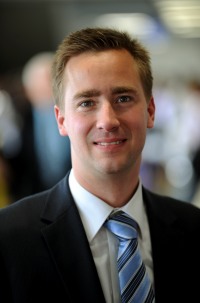ASH 2009 Recollection: a review by Jan Geissler, a CML patient since 2001
ASH 2009 Recollection: a patient perspective
 "Actually, why do I always spend the St Nicholas holiday in the US, instead of with my family", I asked myself when I boarded the plane to the USA on 4 Dec 2009, in anticipation of a long 16 hour trip to the USA, hiding for days in the dungeons of a large convention center. However, from a patient perspective, it was again worth it. Year by year, more than 20.000 hematologists and healthcare people attend the annual meeting of the American Society of Hematology. All top experts from the CML space are presenting their research here, competing for the hottest piece of news from clinical trials.
"Actually, why do I always spend the St Nicholas holiday in the US, instead of with my family", I asked myself when I boarded the plane to the USA on 4 Dec 2009, in anticipation of a long 16 hour trip to the USA, hiding for days in the dungeons of a large convention center. However, from a patient perspective, it was again worth it. Year by year, more than 20.000 hematologists and healthcare people attend the annual meeting of the American Society of Hematology. All top experts from the CML space are presenting their research here, competing for the hottest piece of news from clinical trials.
iCMLf-ESH Meeting in Washington DC: a patient's perspective
iCMLf-ESH Meeting in Washington DC: a patient's perspective
From 24-26 September 2010, the iCMLf-ESH conference on Chronic Myeloid Leukemia (CML) brought together around 400 CML experts from all across the world in Washington DC. Speakers and audience discussed the biological mechanisms of the disease and its treatment, and also about news from clinical trials with 3rd generation therapies.
Past Meetings
Past meetings on CML – how we got to number 11 this year
The International CML meeting being held in Bordeaux
is number 11 in a series that started in 1987
The characterization of the break point cluster region on chromosome 22 reported by Groffen and colleagues from Rotterdam in 1984 was followed rapidly by the identification of the BCR-ABL fusion by Canaani and colleagues the following year. It seems to many in the field that these were important starting points for unravelling more of the molecular basis of CML and so the first meeting to review all that was known of the biology of CML was convened in Annapolis in 1987. Just 35 people attended. The BCR gene of which the original bcr formed just a small part was named at that time. As second CML meeting was held in Cape Cod in 1990 and a third meeting took place on Martha’s Vineyard in 1992 – a charming location selected for his summer holiday this year by the US president. The major topics at that meeting were little different from those discussed subsequently, namely molecular biology, cell biology, Ph-positive ALL and therapy.










